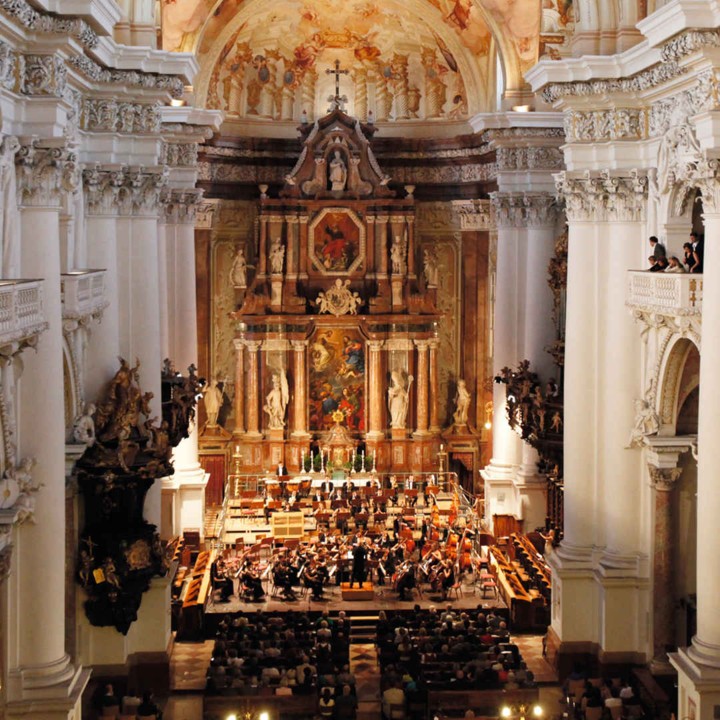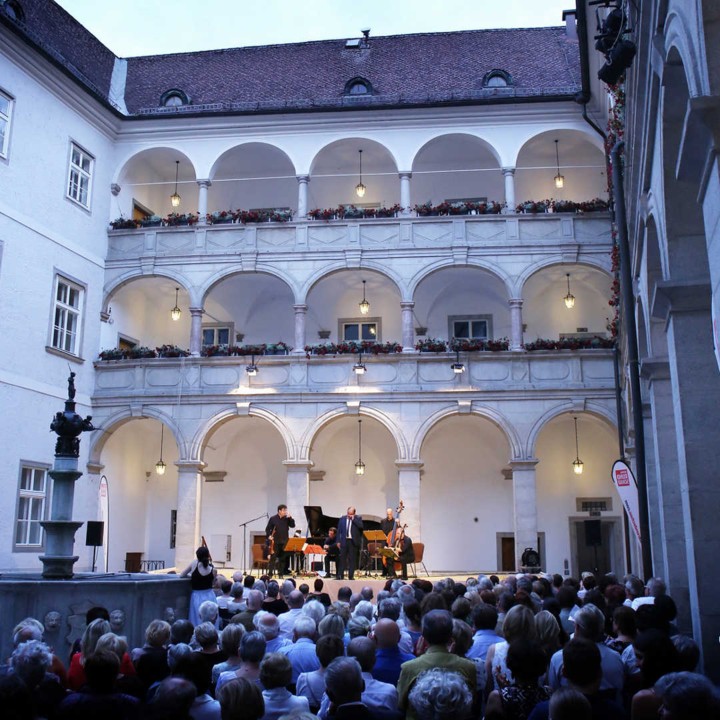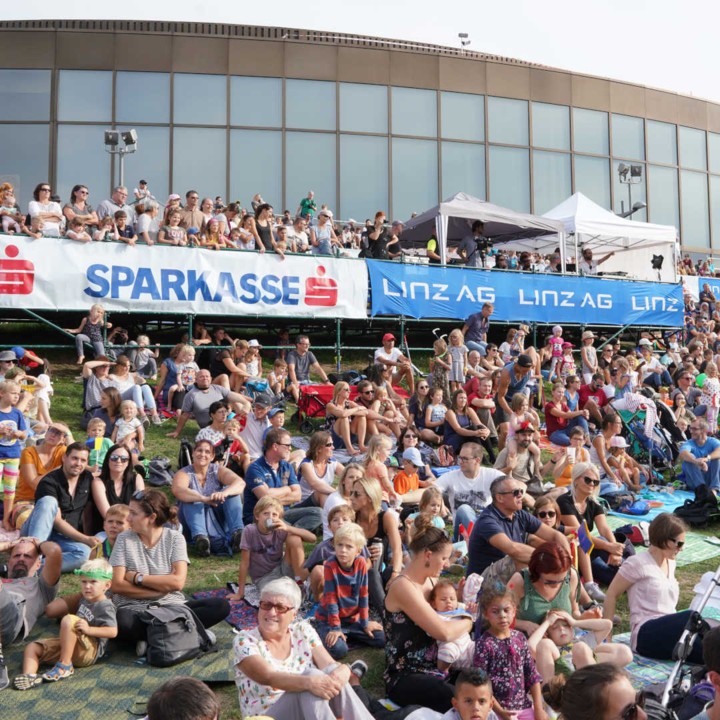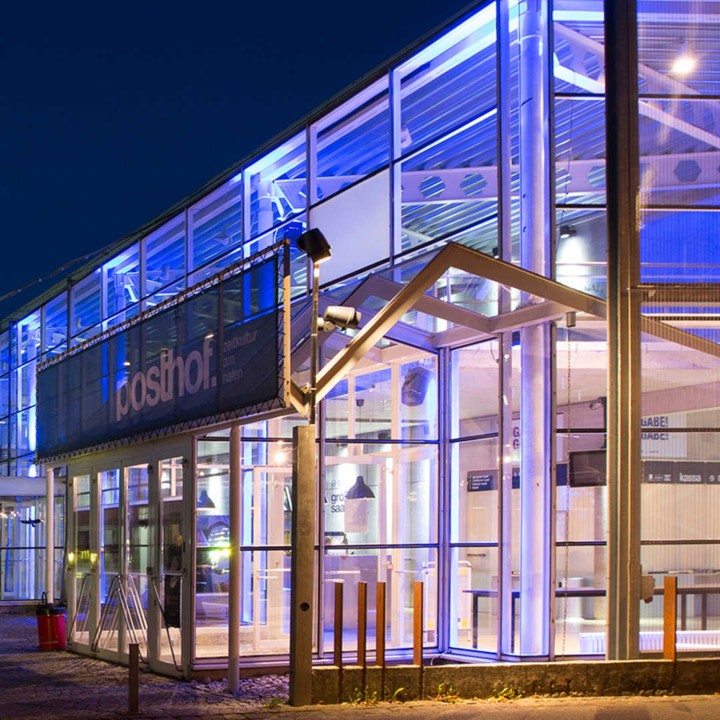
Besides the 3 concert halls in the Brucknerhaus selected events take place in external venues.
This impressive church, which is dedicated to the Assumption of the Virgin Mary, and was elevated in 1999 to the rank of a Basilica Minor by Pope John Paul 2, is an annual venue for the International Bruckner Festival.
Bruckner´s Organ
The Monastery Church of St. Florian has always been a fascinating place, for musicians and the concert-going public alike. In the first rank of those who have performed there, apart from Anton Bruckner himself, are some truly great names: Herbert von Karajan with the Vienna Philharmonic Orchestra, the London Symphony Orchestra conducted by Sir Colin Davis, the inimitable Heinrich Schiff, the Cleveland Orchestra under Franz Welser-Möst, Stanislaw Skrowaczewski who was twice nominated for the Pulitzerpreis, the Gewandhaus Orchestra Leipzig with Riccardo Chailly and Valerij Gergiev, to name but a few.
Maestro Gergiev in particular makes his annual appearance in the Bruckner Festival conditional on conducting a Bruckner Symphony in the Monastery Church. Before each performance he lays a wreath on Bruckner´s Grave, and pauses there in thought for a moment: this has become a touching tradition.
103 registers, boundless enthusiasm
This impressive church is dedicated to the Assumption of Mary, and was granted the status of a Basilica Minor by Pope John Paul 2 in 1999. The papal coat of arms by Klaus Wedenig, which can be found on the left behind the screen, reminds us of this event. The entire collegiate church and monastery are listed as historical monuments.
The Bruckner organ – remarkable for its 103 registers and the eponymous connection with Bruckner – and Bruckner´s grave in the Crypt create a special atmosphere for the performance of great symphonies, which attracts and inspires the world´s most prestigous conductors.

A community of Augustinian Canons , now the Canons Regular of St. Augustine's Order, has existed here since the year 1071. The magnificent, almost completely intact baroque buildings and the Monastery Basilica were built from 1686 to 1750 under the master builders Carlo Antonio Carlone, Jakob Prandtauer and Johann Gotthard Hayberger.
Under the High Altar of the Basilica with its romanesque and gothic elements, lies the monastery´s oldest place of worship, the first burial place of Saint Florian. Also here is the stone coffin of the anchoress Wilbirg, who lived for forty years in a cell beside the old monastery church and died in 1289, with a reputation for holiness. She is honoured as the patron saint of the monastery.
Address:
Monastery St. Florian
Stiftstraße 1
4490 St. Florian
In one of the most beautiful arcaded courtyards in Austria, mild summer nights in the heart of downtown Linz are a special experience. The occasion is sweetened with wonderful concerts in the „Serenades“ series.
Architecture with artistic sensibility in the spirit of the Renaissance
The series of Serenade Concerts in the courtyard of the Linz Landhaus has the longest tradition of summer music events. The former monastery building, centre of provincial political life since 1563, has been the annual venue for this popular concert series for over thirty years.
As you enter the imposing Landhaus building, the most beautiful arcaded courtyard in Austria opens up before you. One of the best of its kind, it was created with care, with artistic sensibility and in the spirit of the Renaissance and Humanism.
The skilful design, the lovingly tended floral decorations on the balustrades, the stone fountain with its bronze figures in the centre of the courtyard, and the acoustic – all these things turn the balmy summer evenings into a treat for eye and ear. With a bit of luck the wildlife will join in, and the birds will sing in duet with the sopranos.
Each year many well-known regional and international soloists and ensembles enhance the programme. Guests can also enjoy culinary delights. Before performances and during the intervals fine wines and other drinks are on offer. Should the weather be bad, the „Steinerne Saal“ of the Landhaus is available for the concert. As its name implies, this is an impressive room, with its pilasters clad in red-brown Salzburg marble.
Address:
Arcaded Courtyard In the LINZER LANDHAUS
Landhausplatz 1
4020 Linz

This public Linz park lies between the Nibelungen and Voest bridges, and each September it is the setting for the Linz Klangwolke.
The Donaulände, which lies on the south bank of the Danube, is a public Linz park, which lies in the centre of the city, between the Nibelungen and Voest bridges. The Donaulände, known by the city´s population as the Danube park, is one of the most important recreational areas in the provincial capital. So it is not surprising that this exceptional space on the Danube is used as a showplace for cultural events.
The annual highlight is the visualised Klangwolke which soars over the expanse of the Danube park, during the International Bruckner Festival.

Built in 1750 for Linz posthorse stabling, this historic area in the harbour district was carefully revitalised as a cultural centre in 1984, and was then enlarged by a modern extension in 1990. Today Posthof – Contemporary Culture at the Harbour presents on its 3 indoor stages up to 250 one-off events in music, dance, theatre, small cultural projects and literature. Each year it attracts an audience about 100,000, making it one of the largest and most vital centres for contemporary culture in Austria.
The Posthof is well-positioned as a local supplier of national and international greats, as well as a promoter of the regional up-and-coming scene. The artistic management when planning the yearly programme focuses on key themes such as „Heimspiel“ (young Austrian artists), „TanzTage“ (Dance, Performance), „Linz Kleinkunstfestival“ (small cultural events such as cabaret or comedy). The music contest „Lautstark!“ (a band competition) and the „Ahoi! Summer-Openair (international music festival) at the Danube park in Linz.
The space available consists of two completely independantly operated building units, with three event halls for audiences of up to 1200, which can be flexibly adapted to meet individual requirements. The overall cultural experience can be rounded off at the „Posthof-Beisl“, a bar-café-restaurant which seats 80 people and also has a guest garden.
Further information and event calendar: https://www.posthof.at/
Address:
Posthof – CONTEMPORARY CULTURE AT THE HARBOUR
Posthofstrasse 43
4020 Linz
Travel directions on Google Maps
